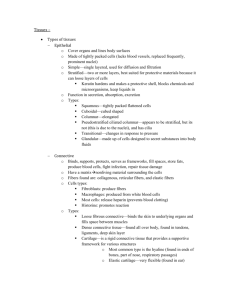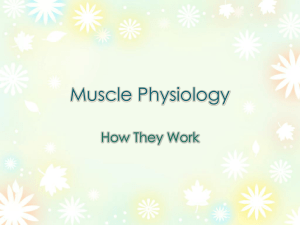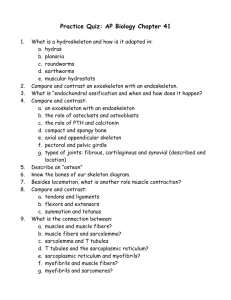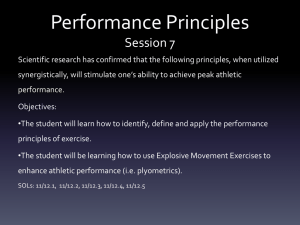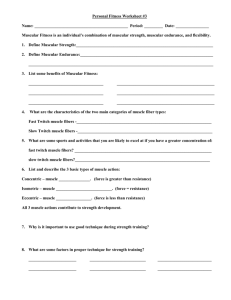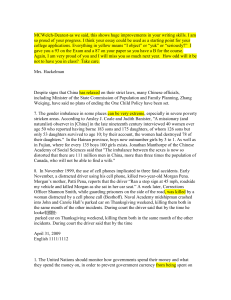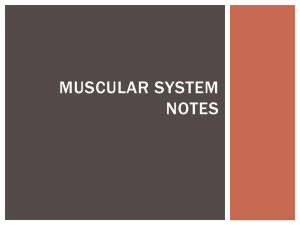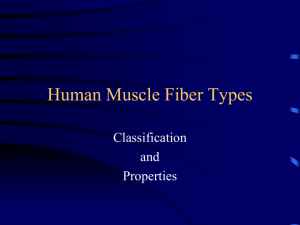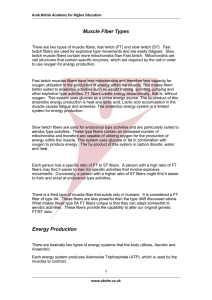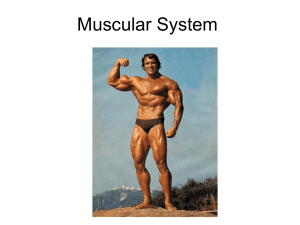Guided Notes - Fairfield Careeer Center Exercise Science 1
advertisement
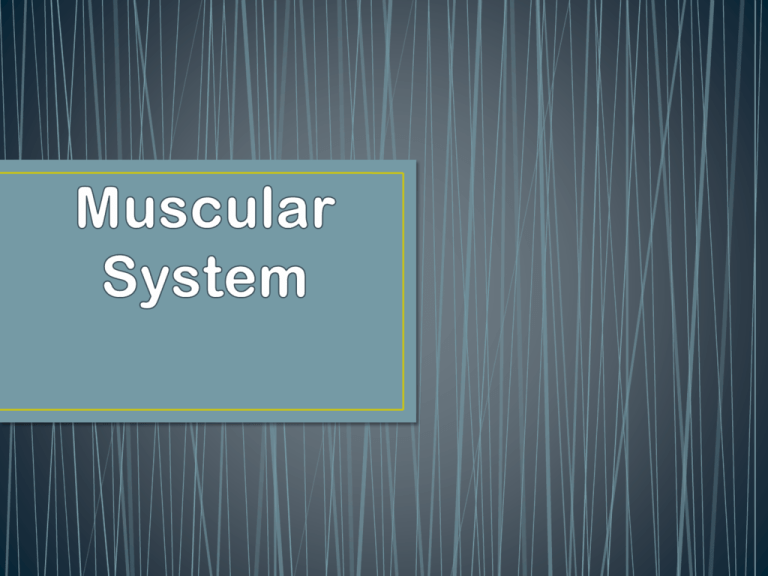
• ______________ • ______________ • ______________ • Attaches to skeleton via _________, contracts to move _________ • ___________ • ___________ appearance • Found on the walls of ________ ________ and ________ (stomach, blood vessels) • ______________ • _________ appearance • Forms the walls of the __________ • _____________ • ____________ appearance • Attach muscle to bone • Defined as ________ or _________ • When describing attachment sites, it’s common to state the origin and insertion of the muscle • Origin- usually attached to the ________ bone of a joint, typically not as ________ • Insertion- usually attached to the more _________ bone and typically more _________ • Origin: Long Head: Supraglenoid tubercle of the scapula Short Head: Coracoid process of scapula • Insertion: Posterior border of the bicipital tuberosity • Muscles pull on bones to create ______________ • Contraction: Origin and insertion move __________ ___________ • Stretched: Origin and insertion move _________ from each other • Prime Mover: Muscle that creates a ________ __________(aka _________) • Antagonist: _________ muscle group • Examples of agonist antagonist pairs? • Divided into two categories based on how quickly they contract • ________ Twitch • ________ Twitch • Relatively large amounts of ___________ • Mitochondria: where __________ metabolism occurs • More __________ than fast-twitch fibers • Capillaries: Smallest ________ vessel that supplies blood to tissues, site of all gas and nutrient exchanges within __________________ system • Contract more slowly than _______ twitch • Lower ________ outputs, but more _________ and _________ resistant than fast twitch fibers • Subdivided into fast-glycolytic and fast-oxidative glycolytic fibers • Type IIX- __________ _____________ • Type IIA- _____ - _______ __________ • ________ amount of mitochondria • _________ _________ for aerobic metabolism • ________ more easily than slow twitch • Vast amount of __________ capacity • Largest and _________ fibers • Produce the ________ _______of all skeletal muscle fibers • Possess speed, fatigue and force production capabilities somewhere ___________ Type 1 and Type IIX • Also called __________ fibers Type 1 Type IIa Type IIx Speed of contraction Force Capacity Fatigue Resistance Mitochondrial Content Low Low High High Medium Medium Medium Medium High High Low Low Size Efficiency Aerobic Capacity Low High High Medium Medium Medium High Low Low Anaerobic Capacity Low Medium High • Typically an equal mixture of fast and slow twitch fibers • Influenced by _________, _________, __________ _________ • _____ play a role in sports performance • Power athletes high percentage of ______ twitch, endurance _____ twitch • Fascia- Thin sheets of __________ tissue membranes – hold ________ fibers in place • ___________ • ___________ • ___________ _____________ bundles of muscle fibers surrounded by connective tissue _____________ Connective Tissue surrounding individual muscle fibers ____________ outermost layer of connective tissue • Muscle fibers are made up of myofibrils (protein filaments) composed of a series of repeating segments called _____________ • Sarcomeres- made up of ____________ (protein filaments) - functional contracting unit of skeletal muscle – section between 2 _____________ • Myosin-_______ dark bands called _____bands • Actin- _____ light bands called ____bands A ________ Thick Myofilament _______ Thin Myofilament __________ • Adenosine Triphosphate (ATP)– High energy _________ molecule used in muscular ___________ • ______________- A chemical substance that transmits nerve impulses across synapses • Synapse – region of ______________ between neurons • Acetylcholine- most common _____________ in the body – located in the Central and Peripheral Nervous system • __________- used to expose binding sites on actin filaments • Troponin- ___________ muscle contraction from occurring when a muscle is at rest • Explanation of how muscles produce ________ and ___________ • Myosin and actin filaments _____ past each other shortening the entire ________ of the sarcomere – draw Z-Lines closer together • When _____________ is released from the Central Nervous System and detected, ____________ is released. • Calcium exposes __________ sites along the ________ for the __________ to attach. • If sufficient ATP is present, crossbridges are formed and the _______ pulls the ________ toward the center, thereby shortening the sarcomere. • Sliding Filament Model
